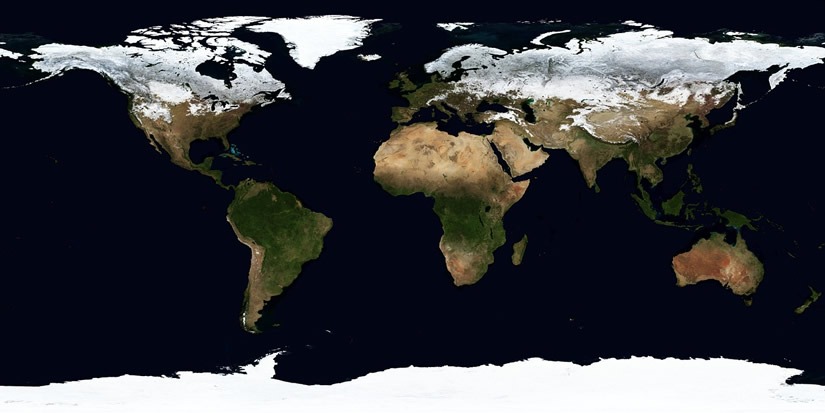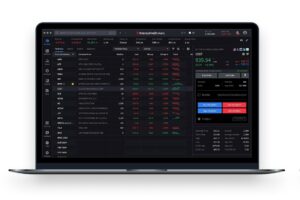At Monday’s close, the Dow Jones Index (US30) was up 0.30%, while the S& P500 Index (US500) was up 0.97%. The NASDAQ Technology Index (US100) closed positive 1.45% yesterday. Stocks rose amid upbeat comments from New York Fed Chairman Williams, who said the Fed is “well positioned” to provide a soft landing for the US economy. In addition, today’s news that the US trade deficit narrowed to a 5-month low in August was a positive for US Q3 GDP.
Nvidia (NVDA) jumped by 3% after Hon Hai said it is building the world’s largest Nvidia GB200 AI chip fab. Shares of American Express (AXP) are down more than 1% after BTIG LLC downgraded the stock to “sell” from “neutral” with a $230 price target.
The Canadian dollar weakened to 1.37 per US dollar in October, hitting an eight-week low amid a worsening outlook for foreign inflows and a strengthening US dollar. Canada’s trade deficit widened to CAD1.10 billion in August from a revised CAD0.29 billion in July, exceeding expectations of CAD0.5 billion. This is the widest gap since May, driven by a 1.0% drop in exports and a 3.0% drop in energy shipments, particularly crude oil, Canada’s main export, which fell by 4.1%. Meanwhile, upcoming labor market data is expected to show further weakness in the labor market, raising the stakes for further monetary easing by the Bank of Canada (BoC).
Equity markets in Europe were mostly down yesterday. Germany’s DAX (DE40) fell by 0.20%, France’s CAC 40 (FR40) closed down 0.72%, Spain’s IBEX 35 (ES35) gained 0.15%, and the UK’s FTSE 100 (UK100) closed negative 1.36%. European stocks fell sharply on Tuesday, pressured by China-related sectors, as markets were stunned by the scope of Beijing’s new fiscal support and investors continued to assess the extent of rate cuts expected by global central banks in near-term decisions.
ECB Executive Board spokesman Elderson said the Eurozone economy is weaker than expected, and “if our projections that inflation will converge to our 2% target in the second half of 2025 are confirmed, the ECB will continue to gradually ease its restrictive policy stance.” Nagel, another representative of the ECB Governing Council and president of the Bundesbank, said he was “willing to consider the possibility” of an ECB interest rate cut at next week’s ECB meeting.
Oil prices fell by 4% yesterday. Expected supply disruptions caused by geopolitical risks in the Middle East have yet to materialize, and investors have shifted their attention back to Chinese demand. China’s National Development and Reform Commission has not announced any new support measures. In the absence of policy intervention, slowing economic growth could reduce Chinese oil demand in the short to medium term.
Asian markets were mostly down yesterday. Japan’s Nikkei 225 (JP225) was down 1.00%, China’s FTSE China A50 (CHA50) was up 4.08%, Hong Kong’s Hang Seng (HK50) decreased by 9.41%, and Australia’s ASX 200 (AU200) was negative 0.35%.
The Hang Seng Index (HK50) fell by 9.4% to finish at 20,927 on Tuesday after rising sharply in the previous two sessions as investors booked profits after the index rose to its highest level since early 2022. Market sentiment deteriorated further on disappointment over a media briefing in China that failed to announce major new economic stimulus measures. The government unveiled a 100 billion yuan investment plan for next year, up from the 1 trillion yuan allocated this year.
The Reserve Bank of India (RBI) kept the benchmark repo rate at 6.5% for the tenth consecutive meeting to ensure inflation falls to its medium-term target of 4%. The latest move came after annual inflation accelerated slightly to 3.65% in August 2024 on rising food prices but remained below the RBI’s target of 4% over five years.
The Reserve Bank of New Zealand (RBNZ) cut the official cash rate (OCR) by 50 basis points to 4.75%, the second consecutive rate cut in line with market expectations. New Zealand’s annual inflation rate in Q2 2024 fell to 3.3% from 4% in the previous quarter and was below market expectations of 3.5%.









